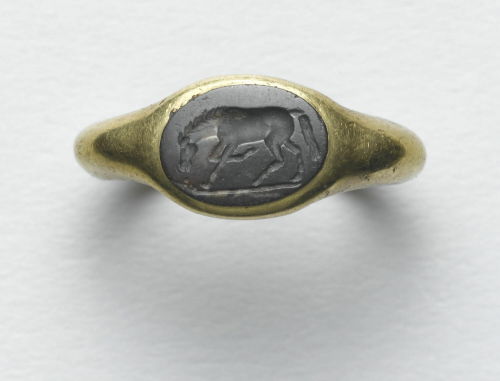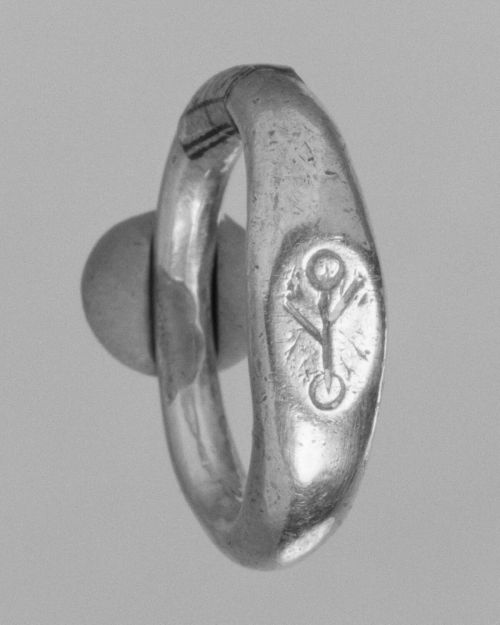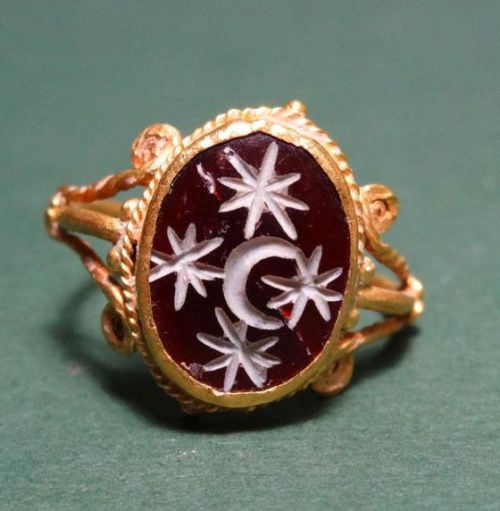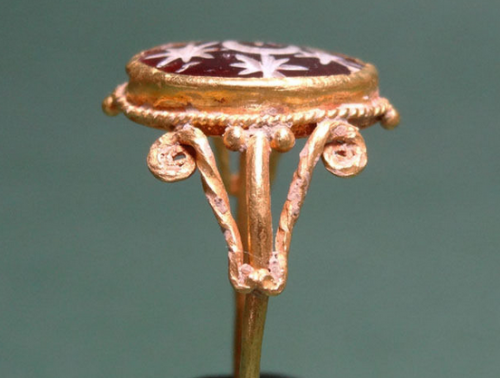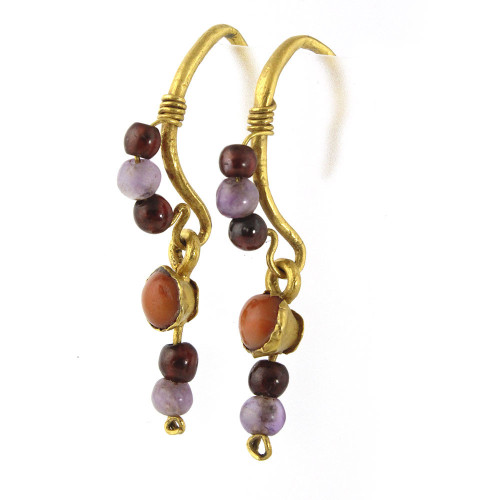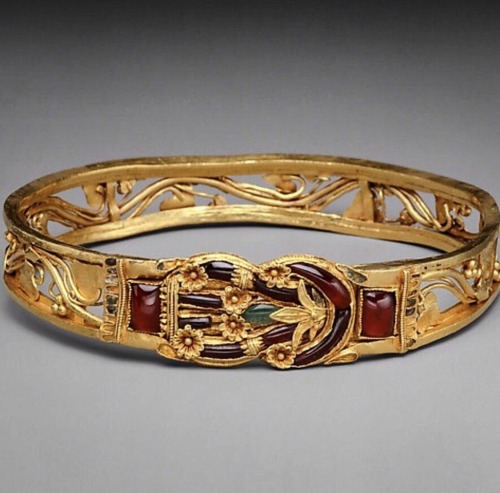#ancient jewelry




~ Snake ring.
Place of origin: Egypt
Culture: Hellenistic
Date: 200-1 B.C.
Who doesn’t love a ring with a lil horse on it?
[ID: A photograph of a gold ring with a silver metal inset; the inset is engraved wit ha horse, head lowered, one leg raised, as if they are grazing or about to trample something.]
Post link
This ring is interesting in part because I don’t know what it means and I’m not sure the Louvre does either. It’s part of the Boscoreale treasure, which means it could be placed anywhere between 500 BCE and 100 CE, and the Louvre takes a stab at identifying the symbol as an anchor, but I’m a bit skeptical.
[ID: A silver ring, mounted on a little slab of clay for photography. The top of the ring is wider and slightly flattened. Incised on the flat bezel are two circles joined by a single vertical line. Branching off from the vertical line are two diagonal lines, both pointing “up” towards the top circle, one about 1/3 of the way down from it and the other about 1/3 of the way from the bottom circle. The vertical line thrusts into the bottom circle and ends on a point.]
Post link
Ring with engraved image of Athena
Bactrian (Indo-Greek) or Indo-Scythian, c. 2nd-1st century B.C.
silver
LACMA
Post link

Earrings with cow heads
Greek, 5th century BCE (Late Archaic-Classical)
The Walters Art Museum


Pendants in the shape of rams’ heads
Punic, 5th-4th century BCE
Miniature glass pendants in a large variety of colors and shapes can be found all over the Mediterranean world and were probably produced in several glassmaking centers, including Carthage, Iran, and Syria. These objects were distributed through the expansive, widespread trade routes established by the Phoenicians. Rams were considered fertility symbols, and this pendant likely also had a protective function and was intended to ward off evil.
The Walters Art Museum

Pendant Necklace
Greek, discovered in modern day Ukraine
late 2nd century BCE (Hellenistic)
The Walters Art Museum

This outstanding example of jewelry from the 1st-century BCE Greek colonies in the Black Sea region is purported to belong to the famed Olbia treasure, named for the town in present-day Ukraine in which it was discovered at the end of the 19th century. Using multiple colors and sizes of gemstones became common in Greek jewelry making after the conquest of the East by Alexander the Great (356-323 BCE), which opened up new trade routes and introduced the Greeks to Oriental styles.
The Walters Art Museum

Necklace with Butterfly Pendant
Hellenistic, ca. late 2nd-1st century BC
Walters Art Museum: Baltimore


Title: Pair of Ear Ornaments with Winged Runners
Date: A.D. 400–700
Geography: Peru
Culture: Moche
The Metropolitan Museum of Art
Medium: Gold, turquoise, sodalite, shell
Byzantine teardrop pendant of blue glass in a gold bezel, dated to the 5th to 8th centuries CE. The gold chain is likely modern. Source: Timeline Auctions.
Post link
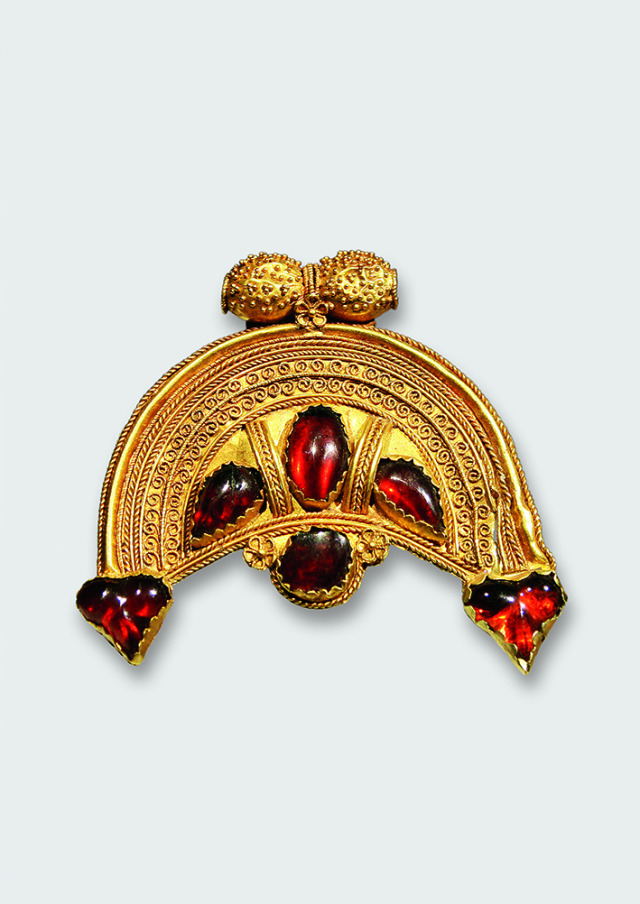
Lunua pendant, Nabataean-Hellenistic, 2nd to 1st century B.C. Gold, Garnet. Jewellery Museum Pforzheim, photo Nick Bürgin.
Gold armband with Herakles knot. Hellenistic, 3rd-2nd century BC, Greek, gold inlaid with garnets, emeralds and enamel. According to the Roman writer Pliny, the decorative device of the Herakles knot could cure wounds and its popularity in Hellenistic jewelry suggests that it was thought to have the power to avert evil. Source: The Metropolitan Museum of Art, New York.
Post link

